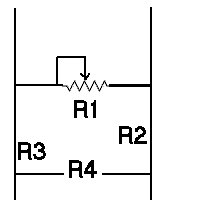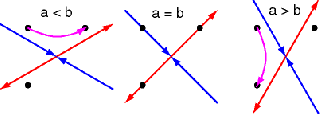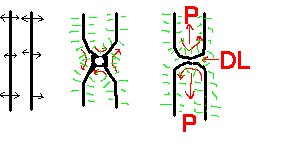Well, let us look into this. I believe I said: "RHESSI does not
observe fusion. What does
RHESSI observe? It observes gamma rays. Now your paper uses gamma ray observations of solar active region 10039, 23 July 2002. The gamma rays in your paper are 0.511 MeV and 2.2 MeV. You say in your paper that those gamma rays are characteristic of positron annihilation and neutron capture. I said "
All of the gamma rays observed by RHESSI are identifiable as positron annihilation, neutron capture or nuclear de-excitation ...".
So your paper and my quote above are in fact in complete 100% agreement: The gamma rays observed by RHESSI do not include the gamma rays of any fusion reactions. Indeed, despite your emphatic "Not true" above, your own paper does not support your claim.
Your paper does not include any direct observational evidence for fusion reactions observed by RHESSI. Considering your own oft expressed disdain for anything less than a controlled laboratory experiment, I find it somewhat amusing that the claims in your paper are so indirect as to be nearly invisible.
Your entire argument rests on the time difference between the positron annihilation and neutron capture signals, and the fact that the time differences are qualitatively similar to free neutron and
13N lifetimes. That's it. Your "observational evidence" for CNO reactions in the corona rest entirely on that one fact. It is a dubious claim at best, and notably one with absolutely no physical justification presented in the paper, aside from a vague reference to high energy events.
In your paper you say: "
H+ ions may be accelerated in the loop to energy levels that surpass the coulomb barriers for the 12C(1H, gamma)13N and 14N(1H, gamma)15O reactions at the feet of the loop". Incredibly, there is no reference cited to support this claim. In fact the relevant physics is totally ignored beyond that one-liner. What is the reaction rate & cross section? You don't say. What is the effect of electron screening? You don't say. What is the proton population density? You don't say. What are the CNO nuclear population densities? You don't say. You never would have gotten away with that kind of sloppy writing had you published this in a peer reviewed journal.
The minimum temperature required to barely start CNO fusion is about 13,000,000 Kelvins. Now the quote from your paper specifies "
... at the foot of the loop." But we see in, for example,
Warren & Reeves, 2001 that the hot spots where temperatures exceed about 10,000,000 Kelvins are above the loop, not at the foot of the loop. So not only does your paper provide zero
direct evidence of fusion, but observations indicate that the high temperatures you require are located at the opposite end of the loop from where you want it to be.
But your paper leaves a serious question ignored. The CNO reactions emit their own gamma rays. RHESSI is a gamma ray telescope. So if there are CNO reactions in the corona, why do we not see the direct gamma rays? They are certainly in the energy range RHESSI should see, so why don't we see them? This is a question not addressed in your paper at all. You spend all of your effort on gamma rays already identified as positron annihilation and neutron capture, and then don't even bother to mention the possibility of observing the direct CNO gamma rays. Why is that?
Then there is the curious publication venue:
The Journal of Fusion Energy. Just read the "Aims and Scope" of this journal: "
Journal of Fusion Energy features contributions and review papers pertinent to the development of thermonuclear fusion as a useful power source. Intended to serve as a journal of record for publication of research results, the journal also provides a forum for discussion of the broader policy and planning issues that have played, and will continue to play, a crucial role in the fusion program. To this end, the journal presents articles on important matters of policy and program direction." So you submitted a paper on stellar astrophysics to a journal that specializes in nuclear reactor technology and social policy. If you are so confident in your claims, why did you not submit your paper on stellar astrophysics to a journal that publishes papers on stellar astrophysics? You chose a venue that would effectively hide your results from the very community of scientists whom you should most want to read the paper. Why did you do that?
Finally, just for grins, allow me to quote the very first sentence of your paper: "
Deep seated magnetic fields accelerate H+ ions, an ionized neutron decay product, upward from the suns core." You complain loudly about other people appealing to magnetic fields when they should be appealing to electric fields. And yet in your very first sentence, you yourself tell us that
magnetic fields accelerate protons. So how do they do that if they don't do that? And isn't that part about "ionized decay product" a bit misleading? Surely there are plenty of protons laying around that did not fall out of neutrons only yesterday (or yesteryear & etc.).
So, I stand by what I said before:
RHESSI does not observe fusion processes. Furthermore, I cite your paper as a specific reference to back me up. After all, your paper specifically says the gamma rays observed come from positron annihilation and neutron capture, and nowhere claims that they come directly from CNO reactions.



